Technology, activism, cannabis - and Brexit. There’s plenty the grocery industry will have to grapple with this year, and plenty of opportunities for growth. Here we give our 10 predictions for the trends, trials and tribulations of 2019, and click here to read the predictions of 20 industry experts.
Brands will begin to brag about cannabis credentials

Well, cannabidiol (CBD) at least. The non-psychoactive derivative of the cannabis plant has been growing in popularity across all manner of grocery categories as its supposed health benefits become well known.
A report by the World Health Organization last year revealed CBD may help to relieve symptoms for a number of illnesses including Alzheimer’s Disease. And in November, following an uproar when a mother had her son’s cannabis oil seized at Heathrow airport after attempting to bring it into the UK from Canada to help with his epilepsy, prescribed medical cannabis was legalised.
CBD is also thought to help with a number of mental health problems such as depression and anxiety. As a result, the wellness credentials of CBD are now a key marketing tool for brands using the extract in their products. Botanic Labs has launched an iced tea infused with CBD which it says “[gives] its drinkers all the health benefits of CBD and [eases] the social anxiety that sometimes comes with fast-paced social interactions”. Even soft drinks giant Coca-Cola is supposedly in talks about developing products with Canadian firm Aurora Cannabis as it closely watches “non-psychoactive CBD as an ingredient in functional wellness beverages”.
Perhaps unsurprisingly, then, Whole Foods Market has highlighted CBD as one of the top food trends for 2019, as more CBD products are tipped to launch in the UK next year, from Mr Moxey’s Mints to new brand George & Mae selling a range of CBD oils and balms. Attitudes towards CBD appear to be shifting and fmcg is embracing the high.
Cannabis, cacao and cider vinegar: what were the unexpected trends of 2018?
Warehouse space will run short. And so might choice
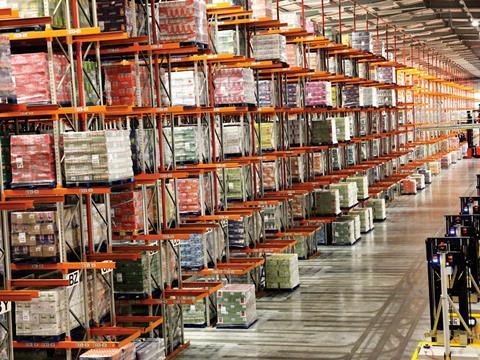
Bets are off as to what Brexit may look like come 29 March (or whether May will make it that long) but anxious anticipation as to the potential impact on food and drink will see companies continuing to stockpile food and fight over warehouse space, say experts. That space is already running short, chilled food warehouses reportedly booked up for the next six months, and so companies may need to prioritise the essentials, leaving consumers with less choice. “Trying to mitigate the impact of possible fresh ingredient shortages will mean brands potentially having to modify or slim down product ranges to reduce the breadth of their offering and concentrate on top sellers,” says Mike Chadwick, consultant at Indigo Software.
Get ready for the consumer activists

Industry has had a taste in 2018, with sustained pressure over plastics and plant-based, but this year will see the rising power of consumer activists, say experts. “We are seeing a new generation of consumer emerge - the ‘prosumer’,” says Laura Gurski, managing director and global industry lead for consumer goods and services at Accenture. “They no longer ‘consume’ a product or service. Instead, they expect to participate at every stage of the shopping journey.”
For brands and retailers that means every stage of the supply chain being scrutinised and, if found lacking, boycotted by this clan of ‘prosumers’. “These moves are indicative of consumers who are more aware and concerned of their individual impact on the planet,” adds Gary Bonsels, group account director at Wasserman. “Brands that don’t adapt in 2019 could be left out in the cold.”
The race will be on to save the abandoned high street

Tales of the struggling high street were constant throughout 2018. Empty stores stood abandoned, footfall plummeted and a number of retailers fell into the hands of administrators. But experts are predicting that this year bricks-and-mortar operators will fight back.
“Shops will get smarter, with retailers using technology such as in-store heat maps and aisle planning to ensure better traffic flow and shorter cues,” says Manu Tyagi, associate partner for retail and consumer goods at Infosys Consulting. Along with experiential formats to entice consumers back, Tyagi says companies will embrace new technologies such as gamification apps like the Pokémon-inspired AR project, aided by the launch of 5G.
Mobile payments will also be key to the high street’s survival, says Alastair Johnson, CEO of Nuggets, an e-commerce payments and ID platform. He says retailers who don’t have near-field communication points of payment, such as Apple Pay or contactless, “will increasingly lose custom”. Large retailers such as M&S will continue to develop their own smartphone payment systems, he adds, but “despite this being a great step forward in more secure payment for consumers, the ultimate goal will be to have one payment app for every service we encounter”.
Mark Howell, creative director of strategic retail design agency Play, says this year will also see successful online retailers such as Asos or Amazon venturing further into physical spaces as the threat of a tax on their online sales looms into view.
Bombshell mergers, sensational shortages and environmental triumphs: 2018 in review
There’ll be a mass adoption of voice technology
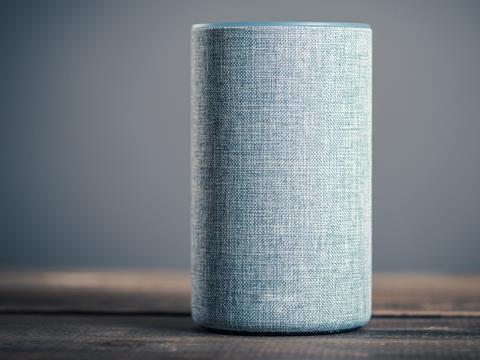
“Voice is growing and that trend will grow exponentially over the next 12 to 18 months,” predicts John Vary, futurologist at JLP, with evolutions that will make it “as seamless and effortless as possible” to order, shop and command hands-free.
Comscore predicts 50% of all searches will be conducted by voice by 2020, as smart speak market penetration outpaces the historical growth of smartphones. “We’re seeing a huge push from Amazon, Google, Apple, Alibaba and others, as well as an uptake and investment from multiple industries,” adds Dawn McKerracher, strategy director at This Place. “The question is, will this be the year voice becomes a serious threat to the screen-based interfaces we’re used to?”
Speed will give way to smarts, as personalised delivery become the new fulfilment battleground

The quicker the better when it comes to online delivery, right? Sainsbury’s has its one-hour Chop Chop delivery service matched by the equally speedy Tesco Now, while Waitrose launched its two-hour Rapid Delivery service in September. But Gavin Masters, industry principal at software solutions company Maginus, says “the vendor that can provide the fastest delivery option is no longer the winner in the eyes of consumers”. Instead, a new trend of personalised delivery will emerge in 2019.
“There is a growing demand for smart delivery that will use artificial intelligence to ‘learn’ people’s routines and deliver to different addresses including flexible delivery at anti-social hours for those who don’t work a job with traditional hours,” says Masters.
In one extreme example, Waitrose is trialling an in-home delivery service that gives drivers access to customers’ homes while they are out. Rather than using AI, Waitrose’s While You’re Away service uses “smart door locks” fitted on the customers’ front doors. A temporary access code is sent to Waitrose via an app. Each driver wears a camera and the footage can be requested by the customer.
Masters says businesses must develop their knowledge of “frictionless delivery”, ensuring their definition matches that of their consumers “by interacting with their customers and finding out what they really value instead of relying on data and industry trends”.
To meet growing demand, technology will increase in warehouses, from the uptake of mobile devices such as scanners and pickers to robotic automation. “These developments will enable retailers to uphold the expected levels of customer service, by ensuring warehouse and delivery operations run smoothly, and through the use of data insights, to inform customers of the status of their order and to solve any problems before they occur.”
In other words, the search for smarter tech to offer hyper convenient grocery shopping shows no signs of slowing.
S-media’s rise will continue

People might already be dabbling in ‘s-commerce’, shopping for food and fashion via social media, but in 2019 this will surge. Lucie Greene, worldwide director of JWT Innovation, points to the push Instagram has been making.
In June, it unveiled a tool where users can add items to posts and Stories, which followers can purchase directly through the app. “We found people were actively using Instagram to discover new items,” says Gord Ray, Instagram’s product marketing lead.
Snapchat is also making a play for social commerce, says Greene. It announced a partnership with Amazon in September that allows users to snap a picture of a product to buy on the e-commerce giant’s site, following the introduction of shoppable stories in June.
What do the experts predict for food and drink in 2019?
The true cost of convenience will race up the agenda
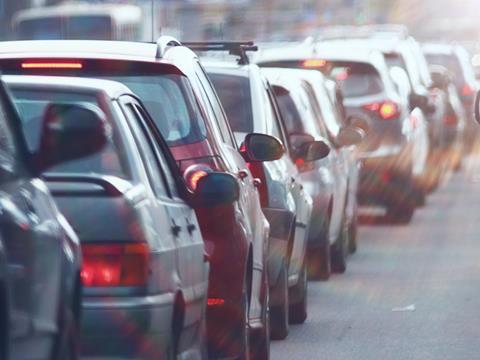
We all want our groceries cheap, fast and just around the corner. But the cost of that convenience to the environment is likely to race up the priority list in 2019 as towns and cities execute proposals for Clean Air Zones. Birmingham, Leeds, Nottingham, Derby, Southampton, and, of course, London are among the cities in the firing line for new emissions charges or exclusion zones, all of which could have major knock-on implications for the hordes of delivery trucks currently clogging up city centres.
“Some city councils plan to charge up to £100 per day for lorries and HGVs,” says Wincanton retail and consumer MD Liam McElroy. “Grocery retailers not investing in clean engines or working with reputable partners are risking being hit by these costs.”
‘Cashierless’ shopping will be embraced

Not only will cards be practically redundant as mobile payments become the norm, but we’ll increasingly see new technologies remove the need for tills in stores too. Amazon plans to open 3,000 of its Amazon Go “cashierless” stores across the US over the next three years and Walmart is trialling its first cashierless concept store.
Chinese e-commerce giant JD.com’s CEO Liu Qiangdong says he will open 1,000 bricks-and-mortar stores every day by the end of 2019, using cashierless technology.
“What seemed like a gimmick two years ago could soon become the level of convenience customers expect,” says Professor Steven Van Belleghem, an expert in digital customer engagement.
Tien Tzuo, CEO of technology firm Zuora, says “this new wave of retail will result in mind-blowing new concepts”. Plans such as Amazon and Walmart’s are “just the beginning of retail innovation that will change the way we shop” and this trend could start to trickle into the UK.
Personal data will intensify

Armed with Fitbits, Apple Watches and apps that track our every bodily function, the appetite for personalised biological data seems to be insatiable. In 2019, more and more food and drink operators will spot the potential.
US personalised meal delivery service Habit has already attracted $32m from Campbell Soup, while Nestlé has launched its ‘Wellness Ambassador’ plan in Japan, a health platform delivering personalised advice.
“Personalisation is working its way into our daily lives,” says DNA Fit CEO and founder Avi Lasarow. “Consumers are much more aware about their health as they have tools to monitor it. It’s natural they now want to do something more with it and that’s where genetics and personalised nutrition comes into it.”
Grocer features 2019
Want to read the future? Find out what The Grocer has planned in 2019
To find out what articles we have planned in 2019 and to download a features list, click here. To comment, offer insight, suggest an idea for a feature or make a prediction of your own, contact features editor megan.tatum@thegrocer.co.uk or call 01293 610264




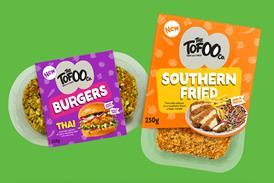






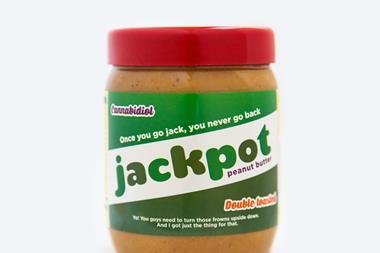







No comments yet